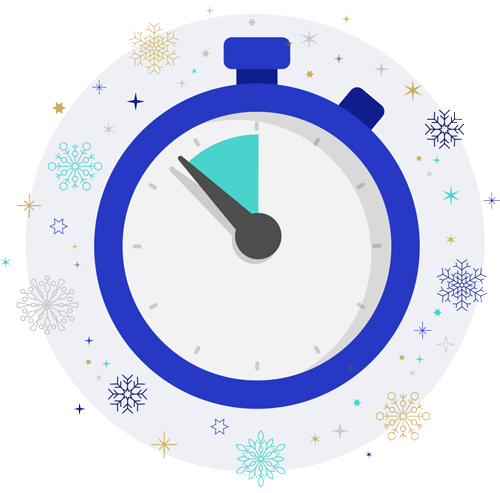Caboose
What happened to the caboose?
The caboose was the red car at the end of the train and housed the crew. Today, advancements in technology have replaced the caboose with an end-of-train device.
Description
(A freight train rolling through a section of track with a railroad crossing sign. Bells ring and a train whistles.)
[Abby Brown] If you're ever stopped at a railroad crossing to let a train pass through, take that waiting time to imagine what's inside each of the train cars. Maybe it's coal or grain.
(A railroad crossing sign in the shape of an “X” with the word “Railroad” on one diagonal of the “X” and “Crossing” on the other diagonal of the “X.” Two red lights flash on and off, one right after the other.)
And when that train passes all the way by, try to see a special device attached to the last car. It's called an end of the train device.
(A red cylinder device with a red flashing light at the top is attached to the bottom of the last train car. Circled in yellow on the screen.)
That little piece of equipment actually replaced a big part of railroad history.
(Abby stands on the steps leading up to a caboose. The caboose is a rectangular train car with a door at the end. The roof creates an overhang at the back of the car like a small porch to keep the rain off someone standing outside the door. There is a ladder that leads up to the roof of the car. At the top of the car is another square section like a look-out in a tree fort. We can see windows on the side and back of the look-out. The side of the caboose reads “Rock Island” across the tope and “Safety First” down near the bottom. At the back of the caboose, it reads “Watch Your Step” to the lower left of the caboose door.)
This is the caboose. It used to be the last car on a train. For 150 years, this is where the crew would ride and keep an eye out for any trouble, like dragging equipment or overheating train parts.
(A photograph shows three men standing at the back end of a caboose.)
(A bright orange caboose is the last car of a freight train.)
(A photograph shows a man waving from the back of a caboose.)
The caboose was also a place for the conductor to do office work, eat meals, and even sleep. It could be a home away from home.
(Walking into the caboose, in the entryway, is a wooden platform on the right with a slim brown mattress. Beyond the entryway is a narrow hallway with cabinets and closets on both sides. At the end of the hallway on the right is an old fashioned pipe stove followed by another wooden platform with a mattress. Then we continue exiting through the door at the other end of the caboose.)
(Looking inside a different caboose car, we see two high backed captain’s chairs in the center. The one facing us has a white wooden box with a slim brown pad on it in front of the chair. There is an electrical box on the wall. of the white wooden box.)
But as technology advanced, the caboose car proved to be too expensive. Right before the caboose was phased out in the 1980s, it could cost $80,000 to make one. But it only cost $4,000 for an end of train device.
(The end of the train device is circled in yellow.)
That was a big difference. The end of the train device uses technology to send data about the brake pressure and other train parts up to the crew in the locomotive, which is at the front of the train. It has a flashing red tail light too.
(A photograph shows five men standing in front of a coal engine. The engine reads “1637” and has a coal car filled behind the engine. The caboose is attached to the engine. It reads “U.P.” and has the number “2123” written on its side.)
So basically, the jobs that the train workers used to do while aboard the caboose could all be done with technology instead.
The caboose was often seen as the friendliest train car because the conductor and crew would wave at passers by as they went through town. It's a piece of railroad history that's fondly remembered.
And you can still wave at trains. There's usually two people on a freight train, a conductor and an engineer. And I bet one of them will wave back at you.
(Cars are stopped at a railroad crossing sign with its lights flashing and its bells ringing as a freight train rolls through.)
Funding for FIND Iowa has been provided by The Coons Foundation, Pella and the Gilchrist Foundation.
